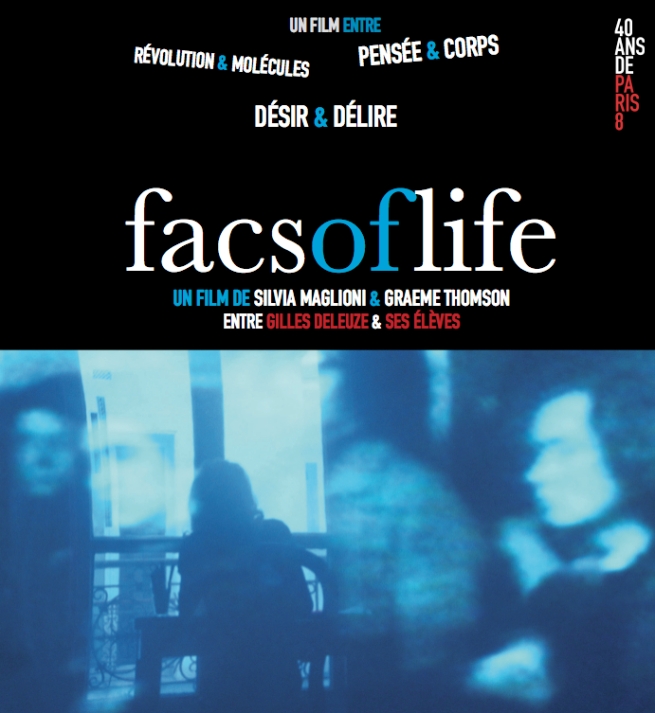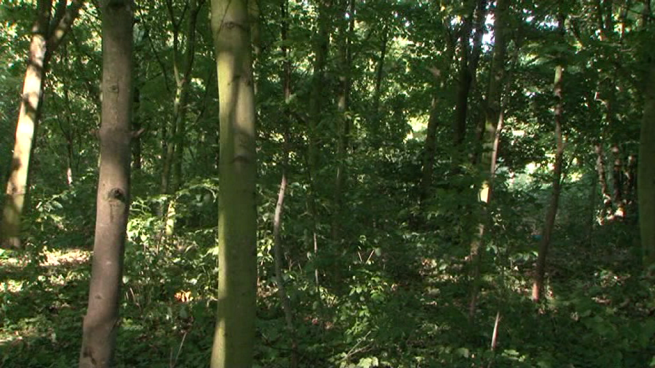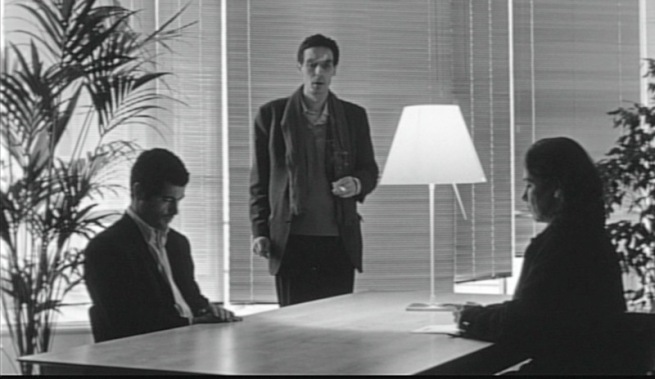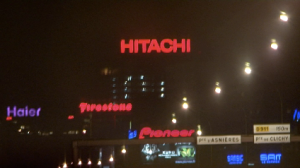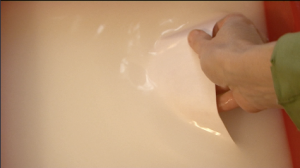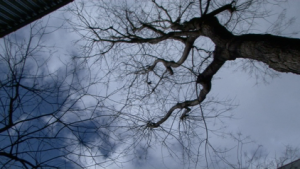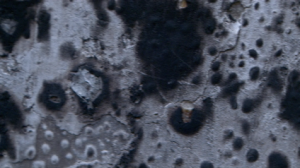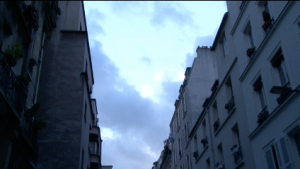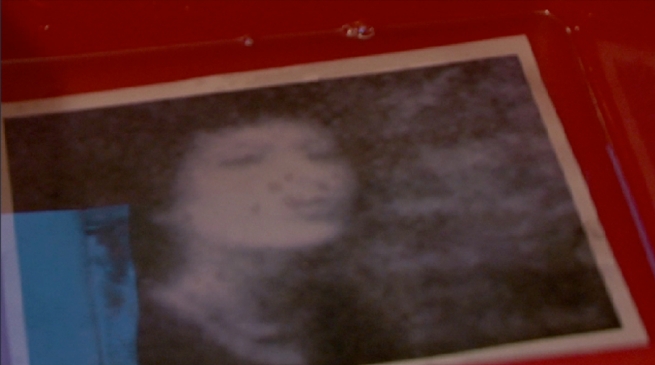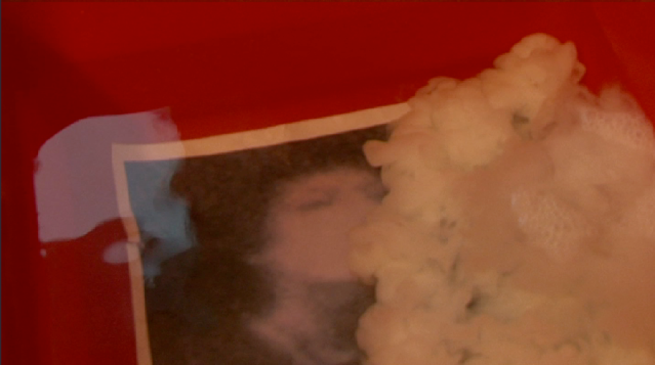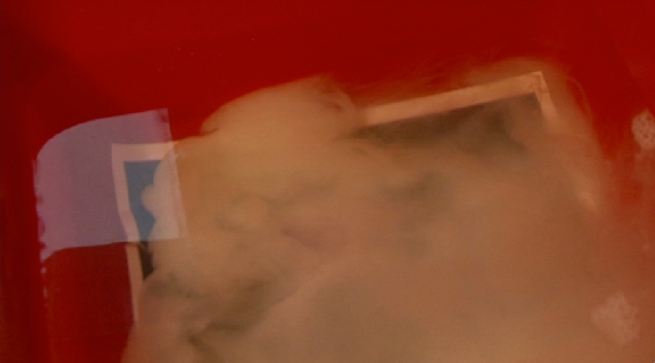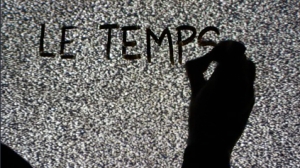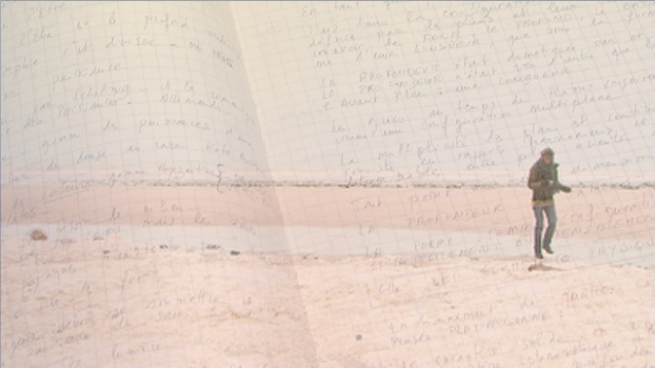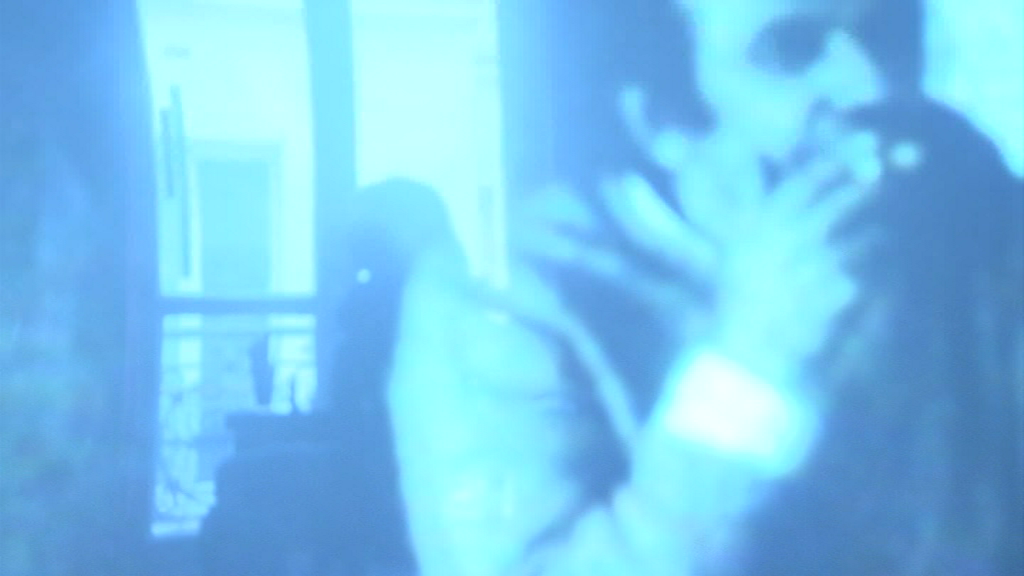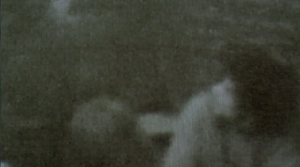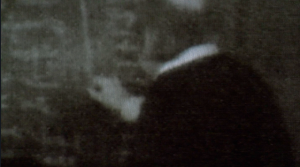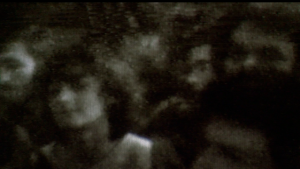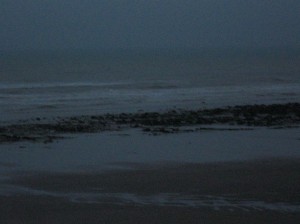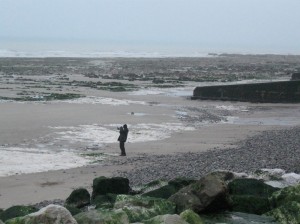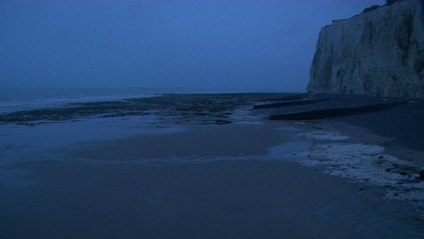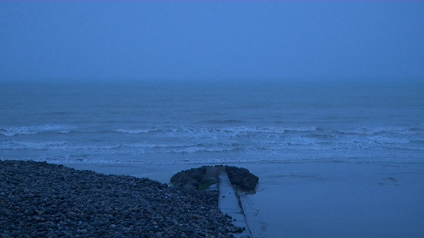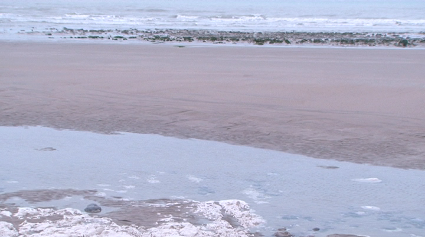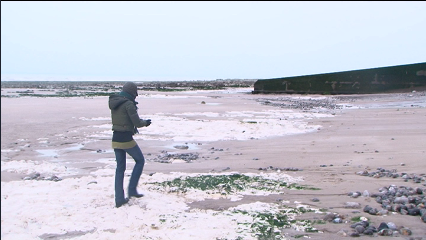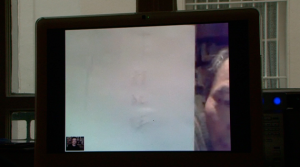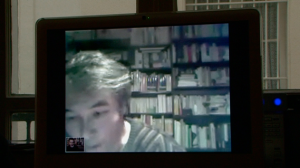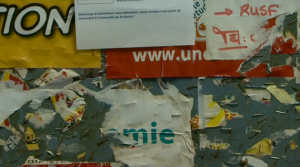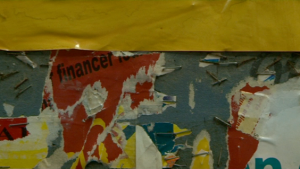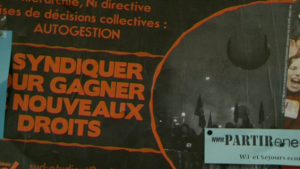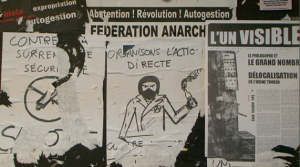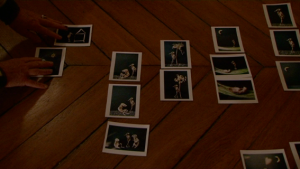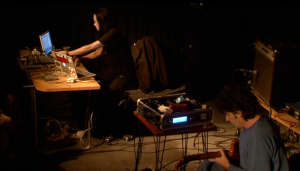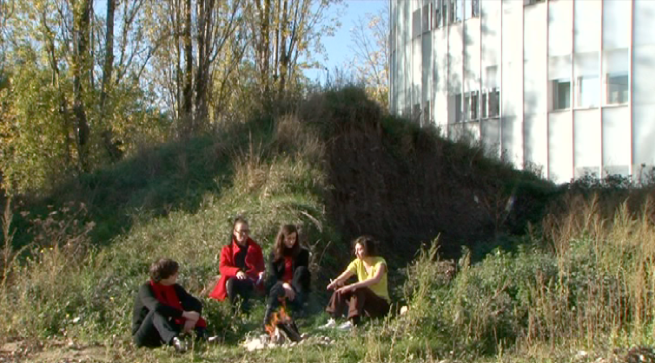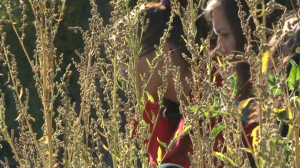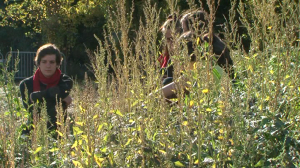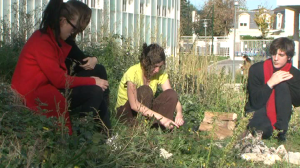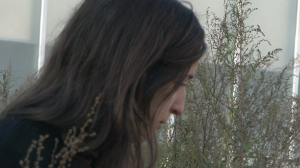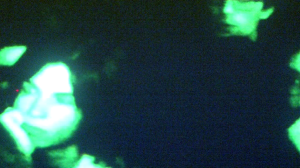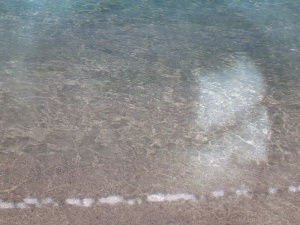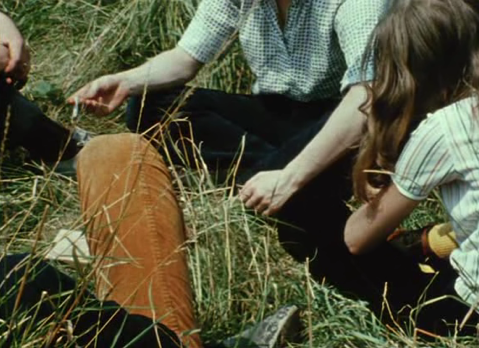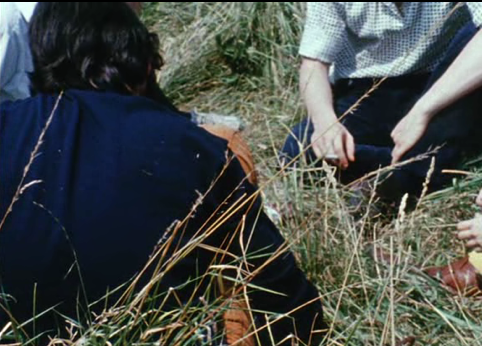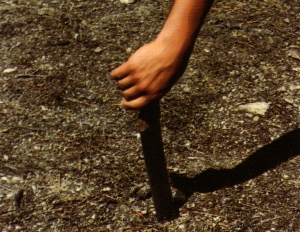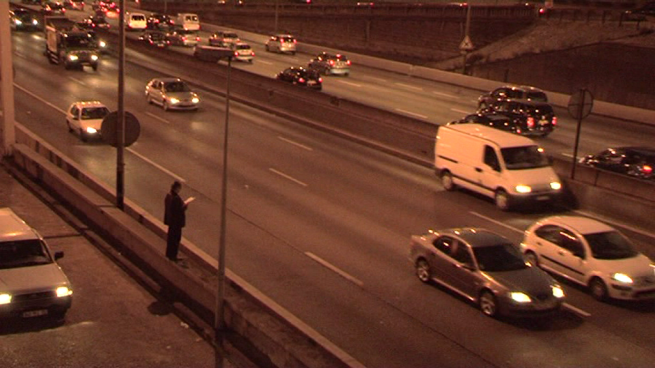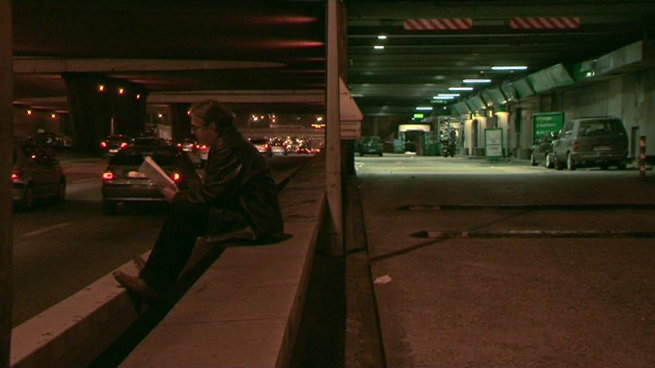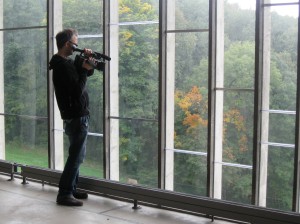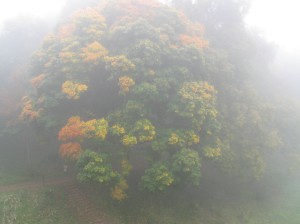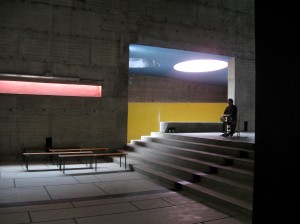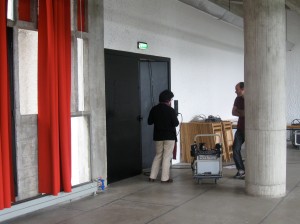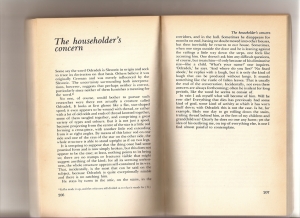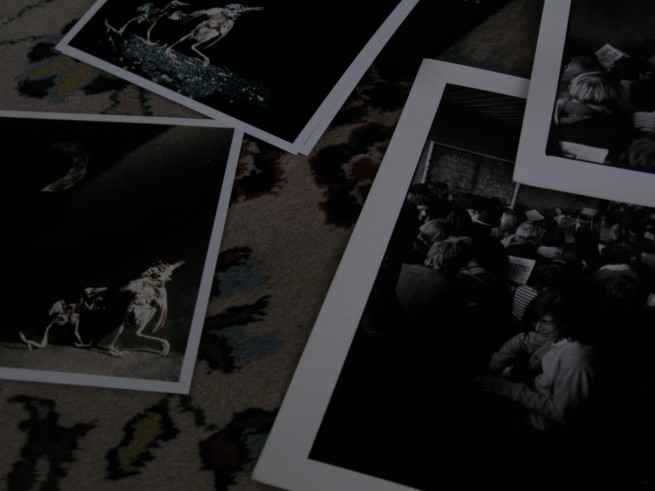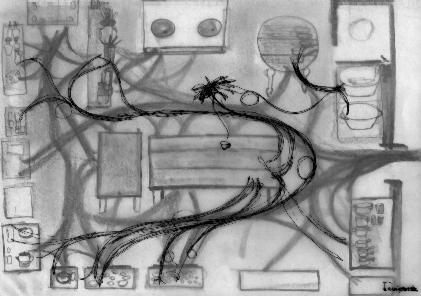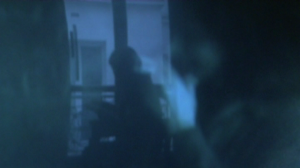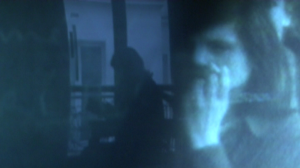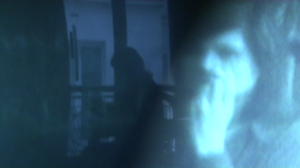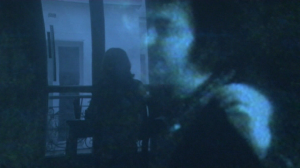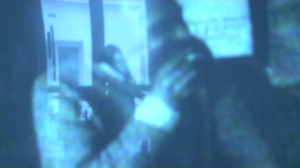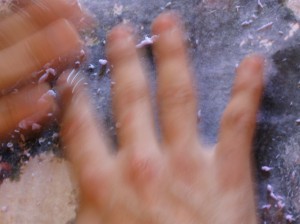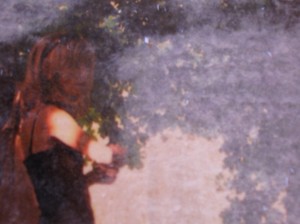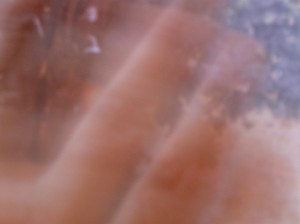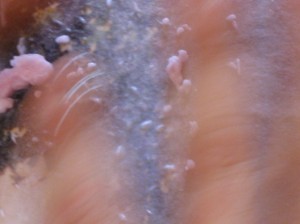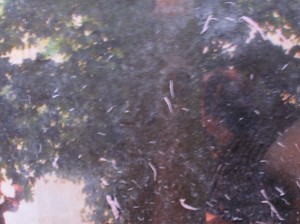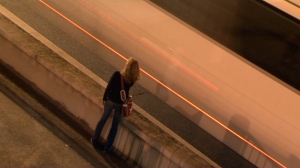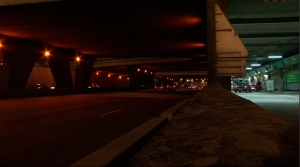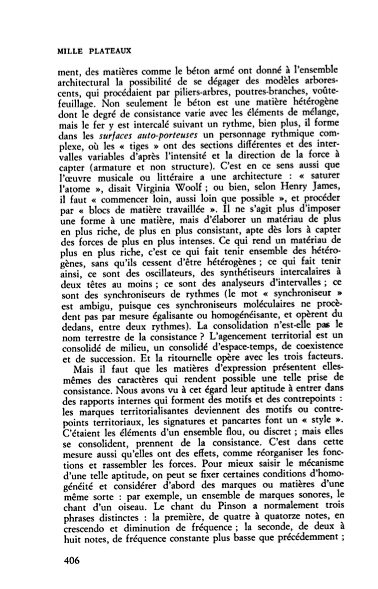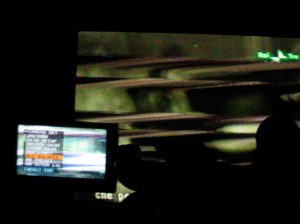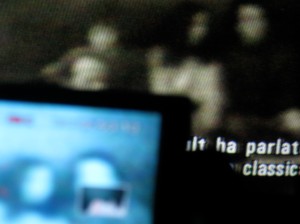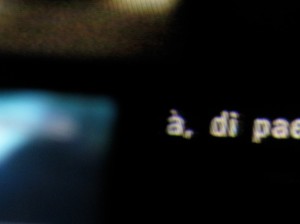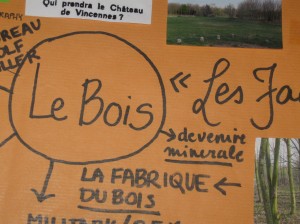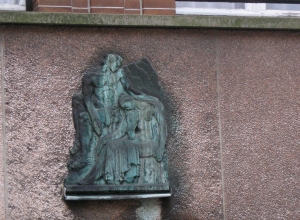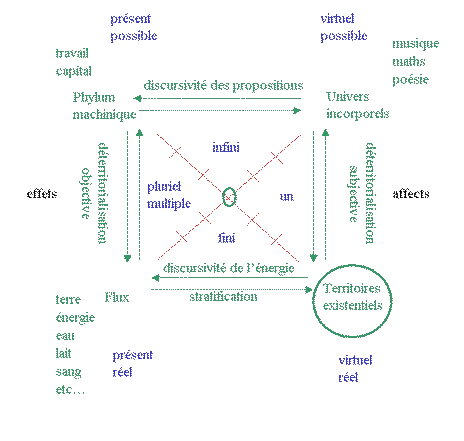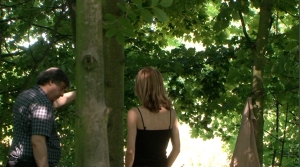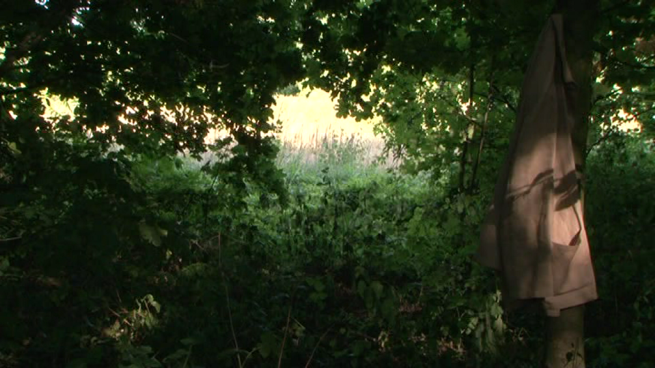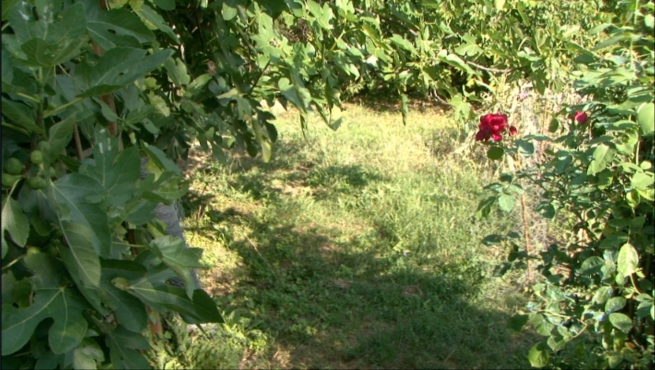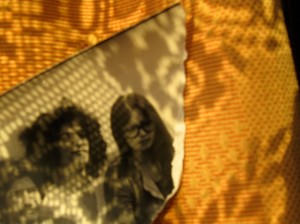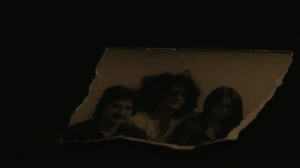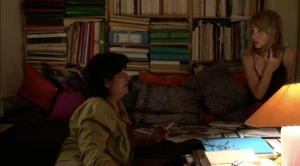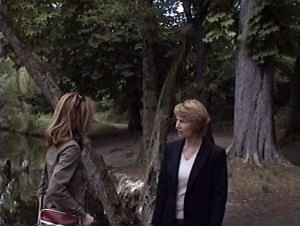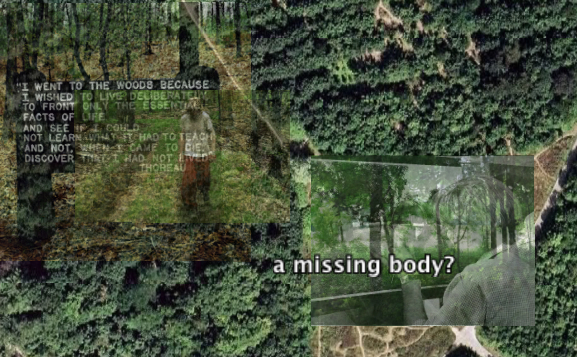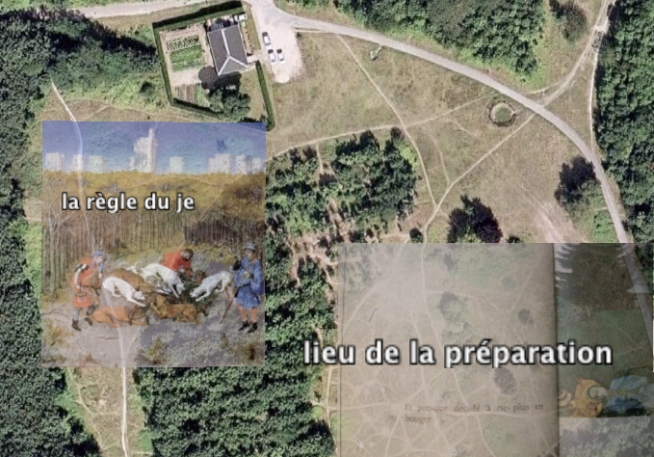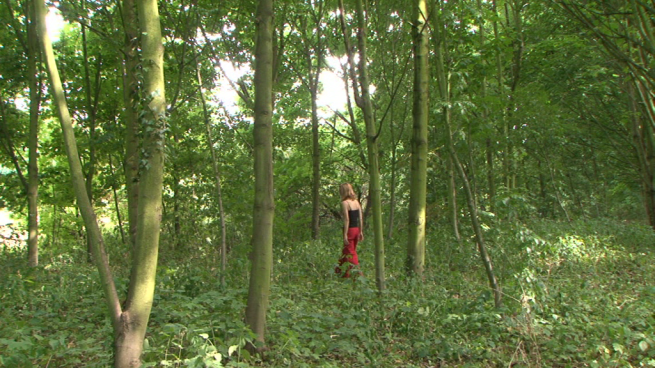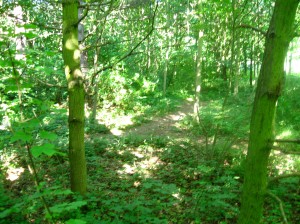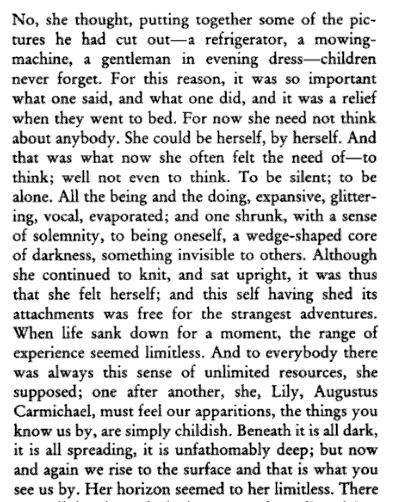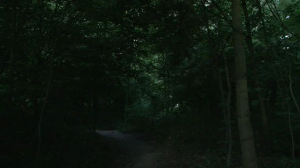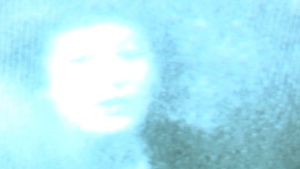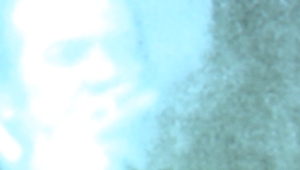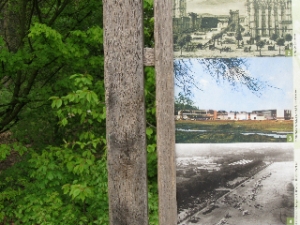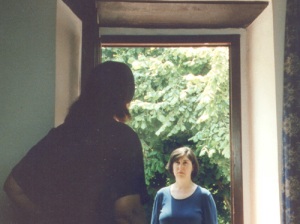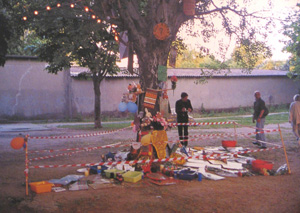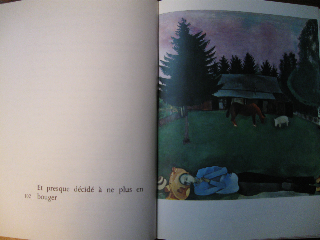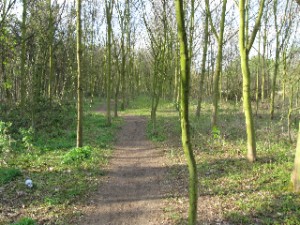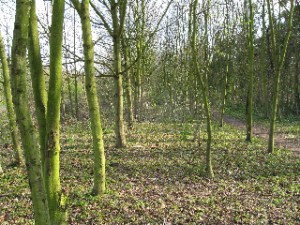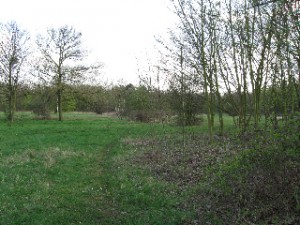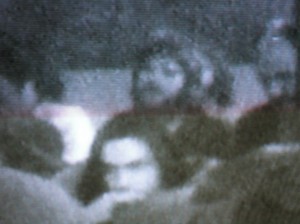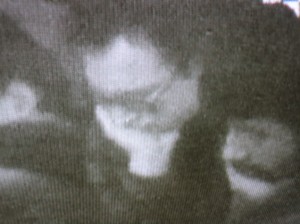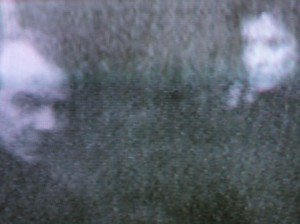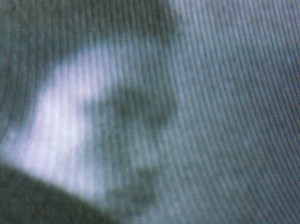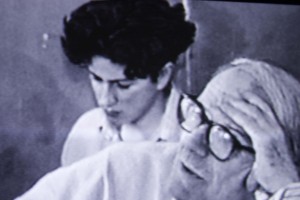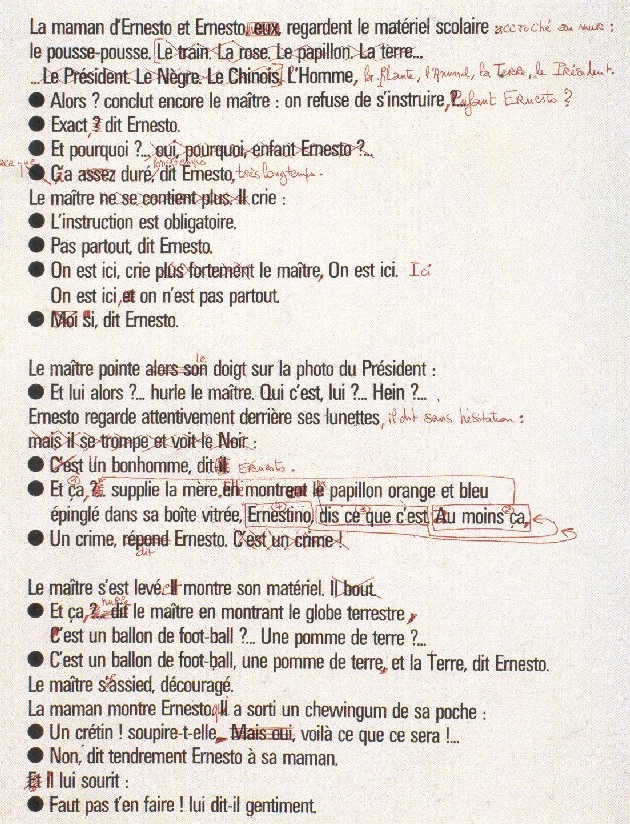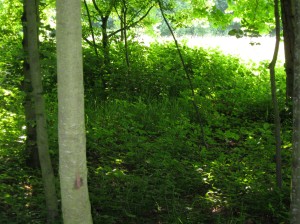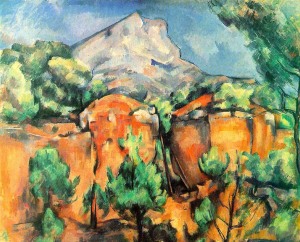
» C’est le Lisse qui nous paraît à la fois l’objet d’une vision rapprochée par excellence et l’élément d’un espace haptique (qui peut être visuel, auditif autant que tactile). Au contraire, le Strié renverrait à une vision plus lointaine, et à un espace plus optique – même si l’œil à son tour n’est pas le seul organe à avoir cette capacité. Et encore, toujours, corriger par un coefficient de transformation où les passages entre strié et lisse sont à la fois nécessaires et incertains, d’autant plus bouleversants. C’est la loi du tableau d’être fait de près, bien qu’il soit vu de loin, relativement. On peut se reculer de la chose, mais ce n’est pas un bon peintre, celui qui se recule du tableau qu’il est en train de faire. Et même la « chose » : Cezanne parlait de la nécessité de ne plus voir le champ de blé, d’en être trop proche, se perdre, sans repère, en espace lisse. […] L’espace lisse, haptique et de vision rapprochée, à un premier aspect : c’est la variation continue de ses orientations, de ses repères et de ses raccordements ; il opère de proche en proche. Ainsi le désert, la steppe, la glace ou la mer, espace local de pure connexion. »
(Gilles Deleuze & Félix Guattari, Mille Plateaux)
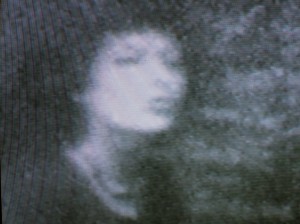
Paris, August 2008
After repeated viewings of a dangerously perishable VHS recording of the lessons of Deleuze on a very old TV monitor found in the trash, we had began taking a series of digital pictures of the screen with the idea of using them as a kind of “surveillance tool” to identify and locate some of the former students who attended Deleuze’s courses. In the absence of names, we thought we could use faces and show them around. The quality of the videos, made by a collective of cinema students led by Marielle Burkhalter with the aim of filming philosophy and the creation of concepts (using one of the very first portable video-cameras, the Sony 3420) verges at times on a complete decomposition of the image which is not simply due to the effect of time but is inscribed into the very materials at the students’ disposal and their non-authorial, non-specialist way of filming. This supposed deficiency in technique is one of the reasons the videos were never widely circulated nor even properly edited and why archivists and technicians offered the material were uninterested in preserving it and unceremoniously consigned it to the dustbin. Given these circumstances, it is no small miracle that roughly half of the tapes survived.

So now we find ourselves not only freezing these images, malgré tout, but increasingly drawn towards their mysterious, fragile skin as though to a fetish ‘abject’ hovering on the bounds of formlessness, zooming-in, blowing up, capturing not only faces and figures but grey areas, interstitial zones of indiscernibility where the black and white of the image inclined to a continuum of greys among whose folds were bluish shades pertaining to a kind of neutral last-person plural, a spectrum of ghost colours inhabiting a beyond both colour and black and white.
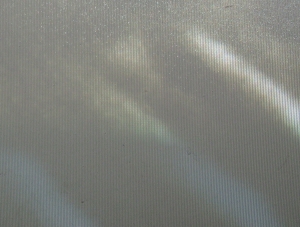
We might say that this colour stands as an index of the peculiar status of these images: rushes that are already in some vital sense cinema yet in no hurry to become a film, gifted with an infinite patience, a radical passivity born from history’s turning away. The colour of limbo, but a limbo that retains a certain dynamism, where things go on happening behind history’s back.
Reversing and positivising the notion of woundedness and disfigurement, they embody, like war wounded, what embarrasses the future but does so not from misfortune but from a spirit of resistance that finds its joy, its creative lines of flight in a damaged life. If the punctum is that in the image which ‘wounds’ the viewer, it may be on account of a corresponding ‘woundedness’ inherent in certain images. It is because of this that these images incline us towards what we could call a gauzeous perception. The image is like a gauze placed upon its wounds, a loose weave beneath which something looms in luminous darkness. Opaque transparency of gauze unwound by my gaze. Shallow respiration of the wound.
Once frozen and digitised, not as a form of correction but to go even deeper into the play of grain and pixel through the haptic vision (where digital becomes touching) of Cézanne ‘s excessive proximity, no longer seeing but feeling the faults in the fabric, the images begin to move again, but according to a « false movement », the hypnotic rhythm of their subtraction and resistance.
(Silvia Maglioni & Graeme Thomson, Inarchivé)
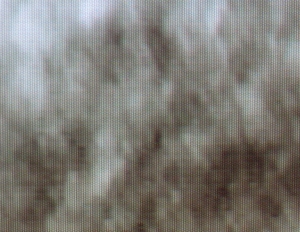
» Devant une image […] le passé ne cesse jamais de se reconfigurer, puisque cette image ne devient pensable que dans une construction de la mémoire, si ce n’est de la hantise. Devant une image, enfin, nous avons humblement à reconnâitre ceci : qu’elle nou survivra probablement, que nous sommes devant elle l’élément fragile, lélément de passage, et qu’elle est devant nous l’élément du futur, l’élément de la durée. L’image a souvent plus de mémoire et plus d’avenir que l’étant qui la regarde. «
(G.Didi-Huberman, DEVANT LE TEMPS)
